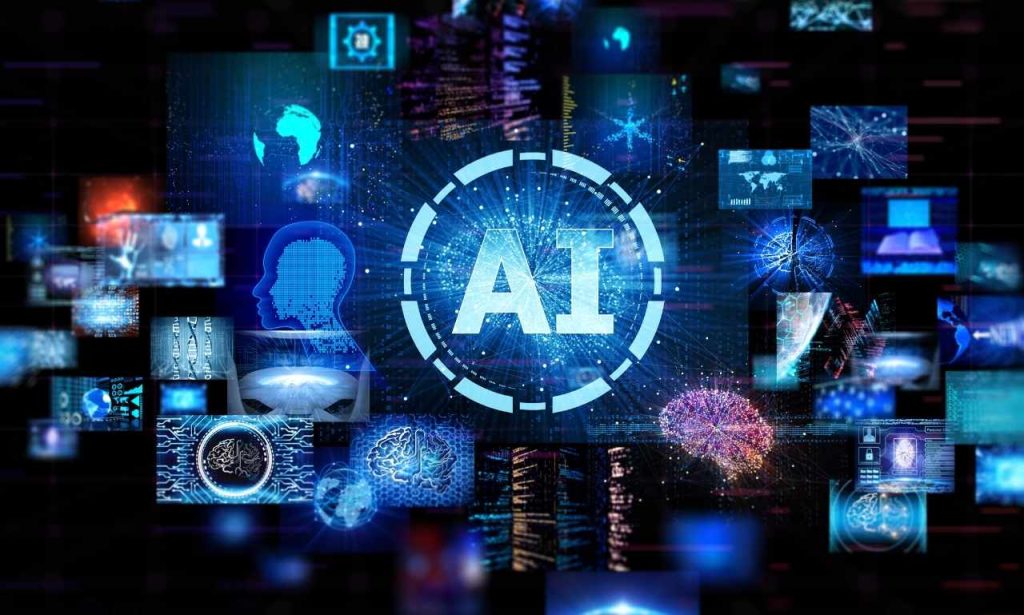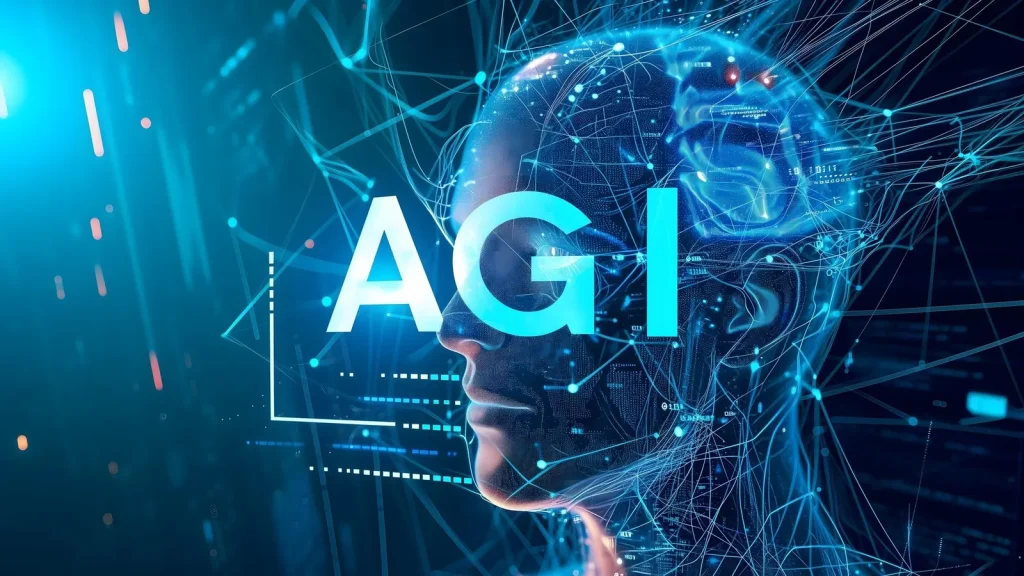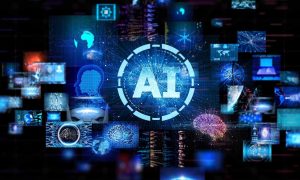Remember the first time you asked Siri a question? That’s AI in action. Crazy, right? AI isn’t just some far-off fantasy anymore – it’s in your pocket! What are your Netflix picks? AI. Gmail sorting your spam? Also AI. But here’s the thing – not all artificial intelligence works the same way. Some AI can beat chess champions, while others might help doctors spot cancer. I’ve spent years watching this tech evolve, and trust me, understanding the different types matters big time. Ready to discover the 7 major types of AI that are changing our world? Let’s jump in.
7 Types of Artificial Intelligence

We can slice AI into different categories based on what it can do and how it works. Some types are already here, working behind the scenes of apps you use daily. Others? Still hanging out in research labs or existing only on paper.
This stuff fascinates me because each category shows us where we are on the AI journey. And what a wild ride it’s been!
Capability-Based Types of Artificial Intelligence
These classifications examine AI based on how it compares to human abilities. It’s like comparing a calculator to Einstein—they’re not playing the same game.
1. Narrow AI
Narrow AI crushes specific tasks but crashes when asked to do anything else. Your spam filter? Narrow AI. Google Translate? Same deal. These systems have one job, and they do it extremely well.
Back in 2017, I worked with a fintech startup in San Francisco. Their fraud detection AI could spot suspicious transactions with incredible accuracy. It saved them roughly $2.3 million in six months. But when did we try using the same system to predict customer churn? It was a total disaster.
Narrow AI includes things like:
- Chess programs that demolished Garry Kasparov
- Spotify’s eerily accurate music recommendations
- Those creepy targeted ads that follow you online
- iPhone’s face recognition that unlocks your phone
These systems don’t “understand” what they’re doing. They follow patterns. They’re insanely good at specific jobs, which makes them valuable despite their limitations.
2. Artificial General Intelligence (AGI)

AGI would match human brainpower across all intellectual tasks. Unlike narrow AI, AGI could write a song, design a bridge, and discuss philosophy—all with equal skill.
Does AGI exist yet? Nope. Not even close.
The development of AGI demands solutions to problems regarding consciousness and intelligence that humans barely comprehend. According to some experts, this could be achieved within a span of decades.
If we ever build AGI, it would do the following:
- The system can learn new abilities through independent learning beyond formal instructions.
- The system needs to comprehend ideas instead of storing raw information.
- The system should solve problems with human-level creativity
- The system demonstrates the ability to share information between completely unrelated domains
AGI raises mind-bending questions. Would these systems deserve rights? Could they be controlled? The discussion goes beyond technological jargon because it constitutes essential aspects of the philosophy of mind.
3. Artificial Superintelligence
This is the big one. The intelligence level of Superintelligence surpasses everything Einstein achieved. The theoretical systems would surpass human intelligence across all scientific, creative, and social intelligence domains.
The warnings of Stephen Hawking about this technology have become self-evident. Artificial Superintelligence possesses the potential to resolve climate concerns and eliminate cancer along with additional diseases. Such a system could determine humans to be a problem. We don’t know.
A superintelligent system might:
- Revolutionize physics beyond our comprehension
- New artistic creations will activate emotions that humans had previously overlooked
- The system will resolve issues that humans have yet to identify
There is a difference as vast as the Grand Canyon between present AI technology and superintelligence. At present,we are discussing scenarios from the realm of science fiction.
Functionality-Based Types of Artificial Intelligence
Let’s shift gears. These classifications examine AI systems internal operations instead of focusing on their capabilities.
4. Reactive Machine AI
Basic systems operate based on current events without retaining any knowledge from previous experiences. They cannot use past experiences to learn or create plans. They analyze current input, apply rules, and spit out answers.
I once played against IBM’s Deep Blue chess computer. Talk about humbling! It calculated millions of possible moves each second, although it had zero “understanding” of chess strategy. It simply reacted to board positions with brutal efficiency.
Reactive Machine AI Examples
IBM’s Deep Blue beat world champion Garry Kasparov without “knowing” anything about chess. It just calculated optimal moves based on current board positions. There was no memory, no learning—just pure computational muscle.
Google’s AlphaGo shocked experts by defeating world champions at Go, a game that is way more intuitive than chess. It didn’t understand Go concepts; it just recognized winning patterns from thousands of games.
Spam filters are reactive machines you use daily. They don’t remember previous emails – they check each new message against pattern rules.
5. Limited Memory AI
These systems use past experiences to make better decisions. They learn from historical data and gradually improve their performance. Most cutting-edge AI today falls into this category.
Limited Memory AI Examples
Self-driving cars remember road patterns and past driving experiences. They learn that when a ball rolls into the street, a child might follow. Their memory makes them safer than purely reactive systems.
Virtual assistants like Alexa remember the context of your conversation. Ask “How tall is he?” after asking about Tom Cruise, and Alexa knows who “he” refers to.
Netflix suggestions come from limited memory AI that tracks what you’ve watched. The system remembers your preferences and makes increasingly personalized recommendations.
6. Theory of Mind AI
These theoretical systems would understand that humans have thoughts, feelings, and expectations different from their own. They would grasp that people have unique beliefs and intentions.
This type doesn’t fully exist yet, though we’re making baby steps. A true theory of mind AI would:
- Recognize your emotional state from facial expressions
- Adjust its communication based on your mood
- Understand social cues and cultural differences
- Predict your needs based on understanding your goals
Think of C-3PO from Star Wars – annoying but socially aware. We’re nowhere near this level of social intelligence in AI yet.
7. Self-Aware AI
The final frontier – AI that possesses consciousness and understands its own existence. These systems would have a sense of self similar to human consciousness.
This remains purely theoretical and deeply controversial. Would machine consciousness even be possible? How would we recognize it if it emerged? Could an AI system experience emotions or have subjective experiences?
If developed, self-aware AI would raise profound questions:
- Would conscious AI deserve rights?
- Could turning off such systems be considered harm?
- Would self-aware AI develop its own morality system?
We’re talking deep philosophical territory here, folks.
Additional Types of Artificial Intelligence
Beyond these major classifications, some specialized AI types deserve mention. These focus on specific applications.
AI in Robotics
AI-powered robots combine physical machines with intelligent decision-making. They interact with the real world through sensors and mechanical parts.
AI in Robotics Examples
Boston Dynamics creates robots that run, jump, and even do backflips. Their systems maintain balance when pushed and navigate rough terrain autonomously.
Surgical robots translate a surgeon’s hand movements into ultra-precise micro-movements, filtering out natural tremors for perfect stability.
Amazon warehouse robots navigate massive facilities without bumping into objects or people. They’ve transformed modern logistics completely.
Computer Vision
These systems interpret and understand visual information from the world. They identify objects, people, and activities from images or video.
Computer Vision Example
Facial recognition systems can identify individuals in a crowd with scary accuracy. They extract unique features from faces and match them against databases instantly.
Medical imaging AI helps doctors spot diseases earlier by highlighting subtle patterns in X-rays and MRIs that human eyes might miss.
Expert Systems

These AI applications encode specialized knowledge from human experts. They follow explicit rules to make decisions in specific professional domains.
Expert Systems Example
Medical diagnostic systems help doctors identify rare conditions by comparing symptoms against thousands of possible diseases.
Tax software incorporates complex tax code knowledge into user-friendly systems that automatically find deductions and navigate regulations.
Conclusion
AI keeps evolving in surprising ways. Today’s systems solve narrow problems incredibly well, but tomorrow’s might approach human-level capabilities across various domains.
As AI grows more powerful, we face amazing opportunities and serious ethical questions. How will these technologies affect jobs? Privacy? Human autonomy? Our choices today will shape our future relationship with these intelligent machines.
Understanding these seven types gives us a framework for meaningful conversations about AI. It helps us separate hype from reality while appreciating how far this technology has come – and how far it might still go.
Also Read: AI Resources and Tips for Teachers
FAQs
Narrow AI handles specific tasks but fails at anything else. General AI would match human intelligence across all intellectual challenges.
No. Despite impressive advances, we only have various forms of narrow AI.
Chess computers, basic image recognition systems, and spam filters analyze inputs without memory.
They learn from past driving experiences while observing current road conditions to make safer decisions.
Unknown. Self-awareness involves deep questions about consciousness that go beyond current technology.




